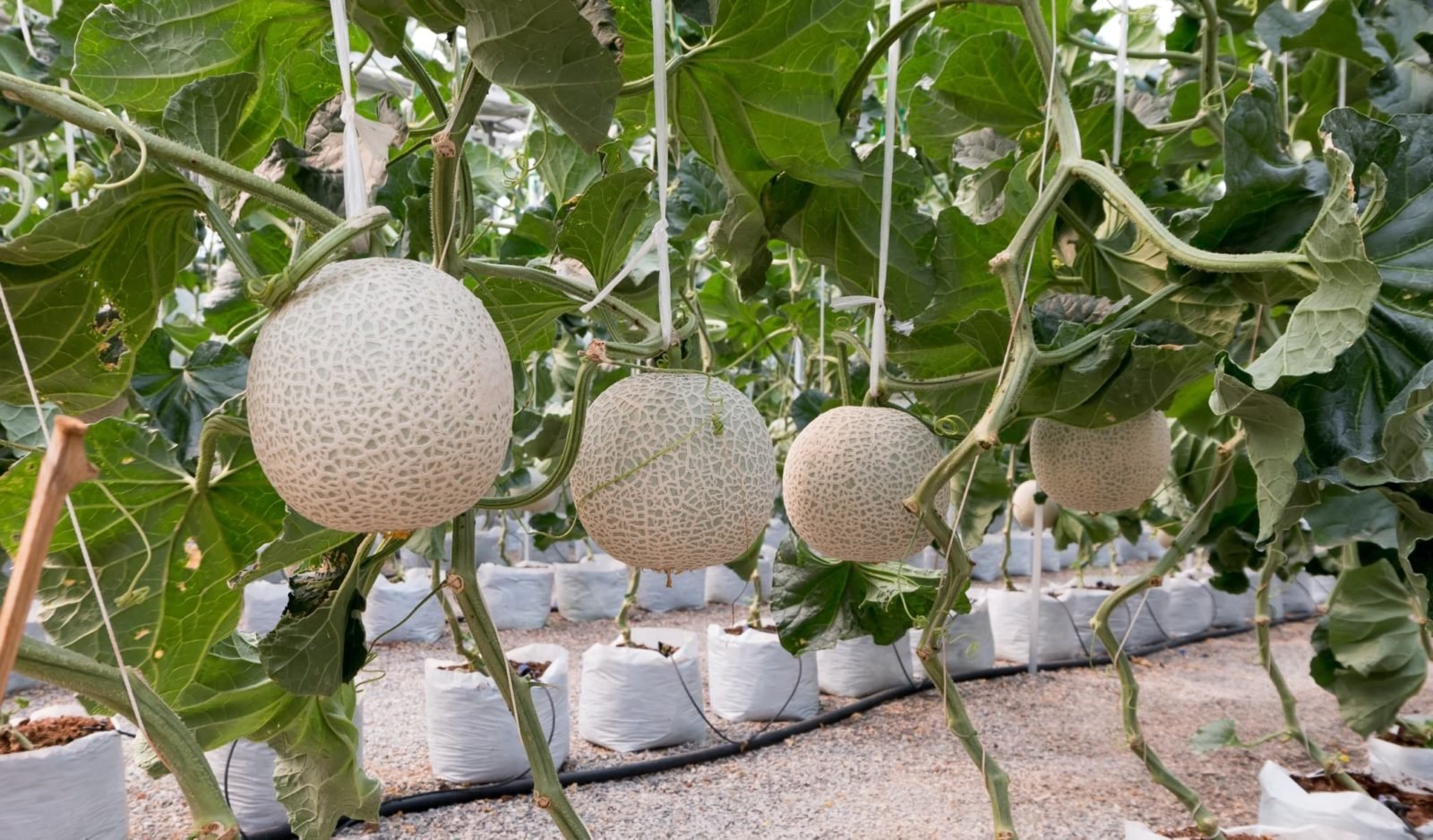This method incorporates some interesting techniques, including pre-germination, the use of kitchen waste fertilizer, and careful pruning to maximize fruit production. Here’s a summary of the steps you’ve outlined:
**Materials you will need:**
1. Melon seeds
2. Two glasses of water
3. One glass of hot water
4. Paper towels
5. Seedling pots
6. Container (size: 50cm x 50cm) with drainage holes
7. Compost
8. Crushed eggshells
9. Bamboo stakes and stainless steel wire
10. Liquid kitchen waste fertilizer
11. Bananas

**Steps:**
1. Soak the melon seeds in hot water for 20 minutes to kill germs and diseases.
2. Clean the soaked seeds with water and place them on paper towels for pre-germination.
3. After sprouting, transplant one healthy seedling into each seedling pot.
4. Prepare the growing container by adding compost to the bottom for improved plant growth.
5. Set up a kitchen waste fertilizer bottle for later use.
6. Deep water the seedlings in the seedling pots before transplanting them into the container.
7. Plant six melon seedlings in the container and cover the soil surface with crushed eggshells.
8. Apply kitchen waste fertilizer (food or vegetable waste) mixed with water every week.
9. Use bamboo stakes and stainless steel wire for support.
10. Prune leaves and lower branches near the ground after 30 days.
11. Count leaves and keep female flowers from the 8th to 13th leaves.
12. Remove all male and female flowers under the 8th leaf after 35 days.
13. Manually sprinkle male pollen on female flowers from the 8th to 13th leaves.
14. Prune the second end of the fruit-bearing branch after 38 days.
15. Keep only one of the largest and healthiest melon per plant and prune the rest after 42 days.
16. Count leaves and prune the top of the main stem on the 26th leaf after 50 days.
17. Prepare strings to tie the melons for support.
18. Continue applying liquid kitchen waste fertilizer every week.
19. At day 60, use bananas soaked in water overnight as a potassium-rich fertilizer.
20. Continue applying liquid kitchen waste fertilizer every week until harvest (day 75).
This method incorporates sustainable practices such as using kitchen waste as fertilizer and implementing effective pruning and support techniques to encourage healthy melon growth. It’s important to note that growing melons can be climate-dependent, so make sure your local conditions are suitable for melon cultivation, especially if you are growing them in containers. Good luck with your melon-growing adventure!

